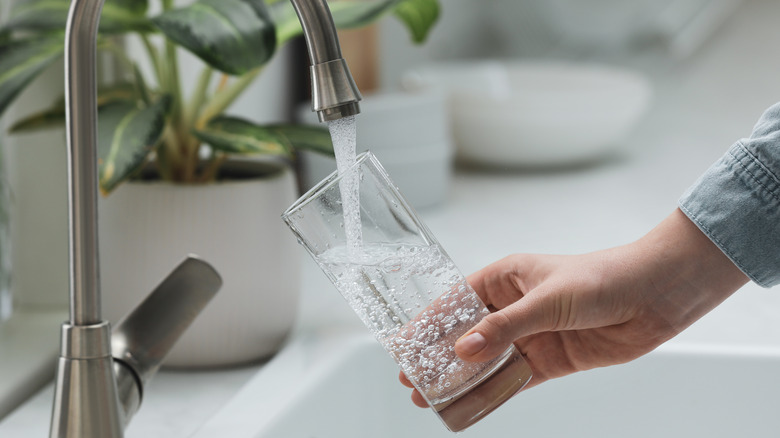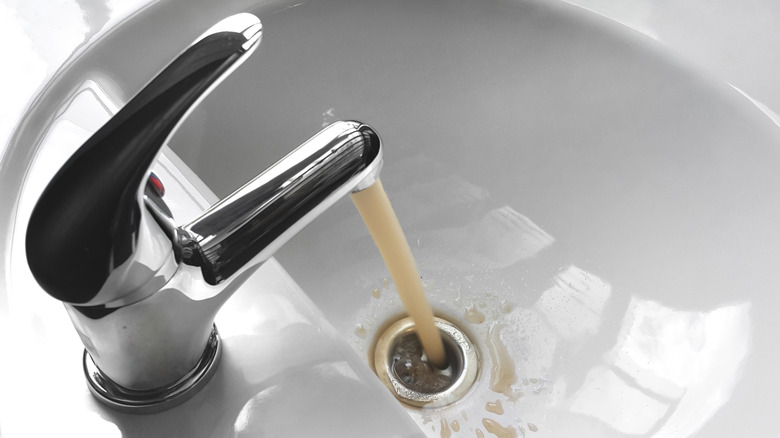The Tell-Tale Sign Your Tap Water May Not Be Safe To Drink
While the federal government regulates public drinking water to ensure it's safe for human consumption, there are various ways in which drinking water systems can become contaminated. In some cases, it may be the result of environmental factors, such as germ exposure through animal wildlife, storm water, or the natural chemicals that make their way into water systems from soil or rocks, per the Centers for Disease Control and Prevention (CDC). Other times, water contamination can be traced to manufacturing defects, cracked pipes, sewer overflow, or pesticides.
Along with bacterial, parasitic, or viral contaminants, nitrate, copper, lead, arsenic, and radon are just a few of the different chemical contaminants that can infiltrate tap water systems. In some cases, we may be able to pick up on clear signs indicating that our tap water might not be safe to drink. While it may not always be so obvious, the color of one's tap water can often tell us a lot.
What the color of your tap water could mean
Water that is not clear in color is a tell-tale sign that the water source may potentially be contaminated. For example, a glass of water that appears murky or cloudy may not be safe to drink. However, this isn't a hard-and-fast rule. Experts at the United States Geological Survey explain that tap water that appears cloudy for a few moments before clearing up is often the result of air bubbles that may form when pipes experience mild pressure. According to Ranck Plumbing, Heating & Air Conditioning, if the bubbles in your water glass begin to dissolve from the bottom up, it's not usually a sign of contamination. Rather, it's the water that remains cloudy that should be tested.
Alternatively, water that takes on a brown, yellow, or orange hue may indicate that the water contains high amounts of iron, manganese, or lead (via Insider). Furthermore, water that appears blue-green in color can point to excess amounts of copper in the water source, often due to worn-down pipes.
How to track the quality of your tap water
The U.S. Environmental Protection Agency (EPA) establishes limits to ensure that contaminant levels in public drinking water do not exceed that which is safe for human consumption. For example, levels of arsenic are limited to 10 parts per billion (ppb). However, arsenic is one chemical that can't be detected simply by looking at your glass of water (via Insider). That's why it's also important to take note if your tap water takes on an unusual taste or smell.
To keep an eye on the quality of your tap water year-round, take a look at your annual Consumer Confidence Report (CCR) from the EPA (via CDC). This will either be mailed to your household or posted online if your tap water comes from a public water source. The report will contain a list of contaminants detected within the water, some of which will be chemicals needed to keep drinking water safe. Anything listed as "violated" means that levels of that contaminant exceed EPA legal limits. The report will contain details regarding the violation, if there are any potential health risks, and plans for how the problem will be resolved.
Note that CCRs are not provided to those who receive their tap water from a private well source. These individuals should keep up with routine well testing to assess water quality.



